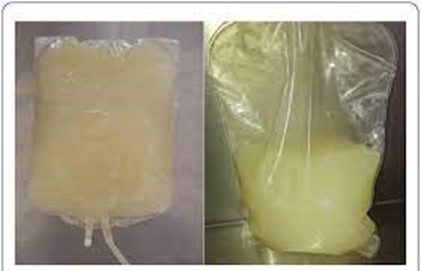A nurse is providing teaching to a client and their partner about performing peritoneal dialysis at home.
When discussing peritonitis, which of the following manifestations should the nurse identify as the earliest indication of this complication?
Cloudy effluent.
Increased heart rate.
Generalized abdominal pain.
Fever.
Fever.
The Correct Answer is A

The earliest indication of peritonitis in a patient undergoing peritoneal dialysis is often cloudy dialysis fluid when drained from the body.
Choice B is incorrect because an increased heart rate is not the earliest indication of peritonitis.
Choice C is incorrect because generalized abdominal pain is not the earliest indication of peritonitis.
Choice D is incorrect because fever is not the earliest indication of peritonitis.
Nursing Test Bank
Naxlex Comprehensive Predictor Exams
Related Questions
Correct Answer is C
Explanation
The nurse should include this intervention in the plan of care because it can help relieve pressure on the reddened areas over the client’s bony prominences and prevent the development of pressure injuries.
Choice A is incorrect because applying an occlusive dressing to intact skin over bony prominences is not an appropriate intervention for preventing pressure injuries.
Choice B is incorrect because turning and repositioning the client every 4 hours may not be frequent enough to prevent the development of pressure injuries.
The client should be turned and repositioned more frequently, at least every 2 hours.
Choice D is incorrect because massaging reddened areas over bony prominences is not recommended as it can cause further damage to the skin and underlying tissues.
Correct Answer is A
Explanation
This statement indicates that the nurse understands the importance of limiting the exposure of family members to radiation from the sealed implant.
Choice B is incorrect because the dosimeter badge should not be given to the oncoming nurse at the end of the shift.
The dosimeter badge is used to measure an individual’s exposure to radiation and should be worn by the same person throughout their shift.
Choice C is incorrect because if the client’s implant dislodges, the nurse should not touch it with their hands, even if they are wearing gloves.
The nurse should follow the facility’s protocol for handling dislodged implants.
Choice D is incorrect because soiled linens from a client with a sealed radiation implant do not need to be removed from the room after each change.
The linens can be handled according to standard precautions.
Whether you are a student looking to ace your exams or a practicing nurse seeking to enhance your expertise , our nursing education contents will empower you with the confidence and competence to make a difference in the lives of patients and become a respected leader in the healthcare field.
Visit Naxlex, invest in your future and unlock endless possibilities with our unparalleled nursing education contents today
Report Wrong Answer on the Current Question
Do you disagree with the answer? If yes, what is your expected answer? Explain.
Kindly be descriptive with the issue you are facing.
